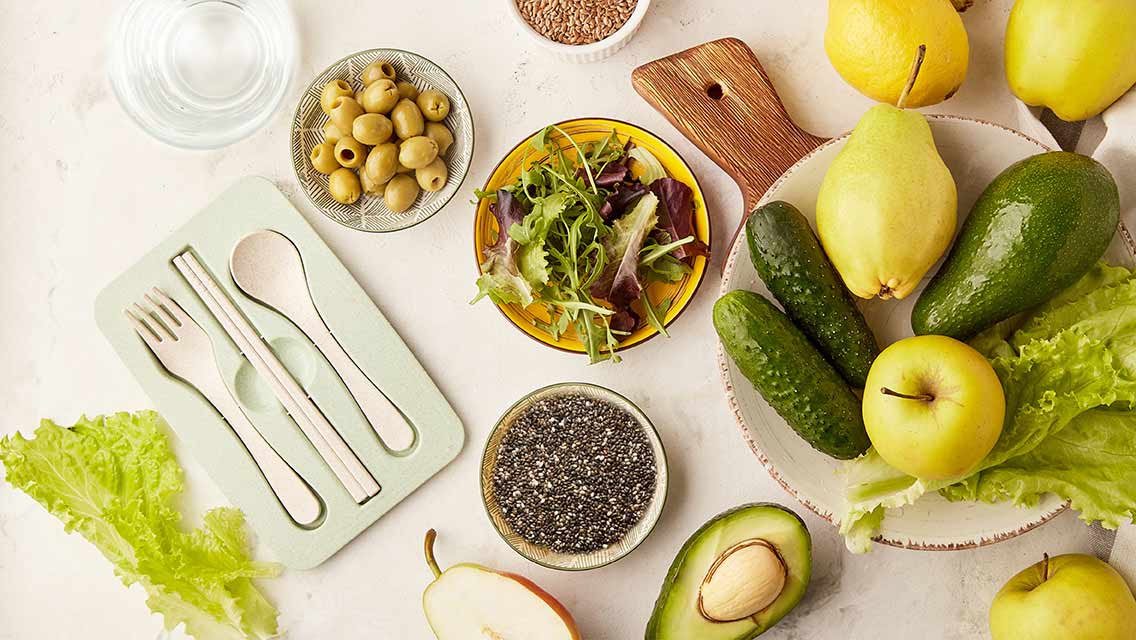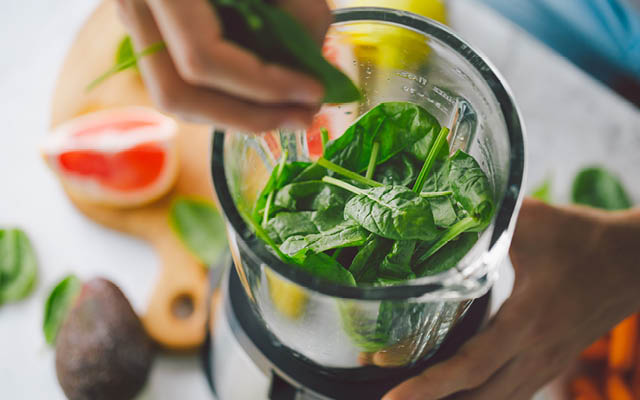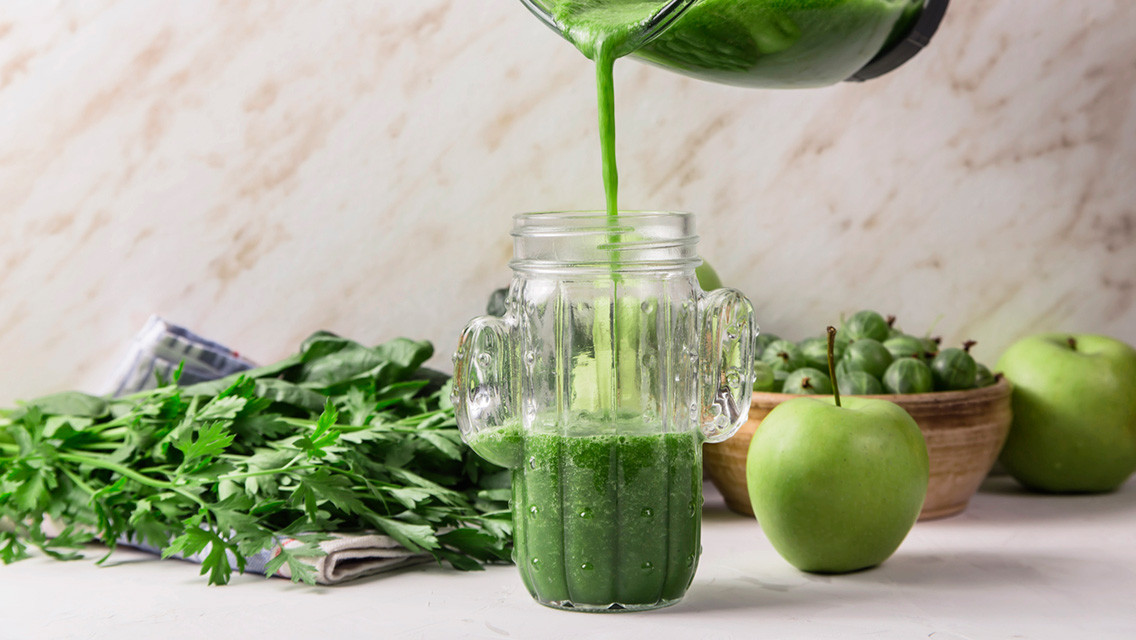“Yuck.” Faced with the fact that each of us is continually being exposed to all sorts of toxins — in the air we breathe, the water we drink, the food we eat and the products we use every day — is there really any other reaction to have?
Well, fortunately, yes. Because while “yuck” is certainly an understandable response, it’s not going to help these bodies of ours shovel out from the mess. And while they’ve been brilliantly designed to eliminate a wide variety of harmful elements, when our built-in detox systems get bogged down and start falling behind on their work, the results can be ugly — and eventually, even deadly.
That’s why the best approach to supporting your body’s natural detox systems is an ongoing one. By taking a few simple, daily steps, you can help scrub each of your body’s major elimination systems and enable them to function more efficiently. This empowers your body’s immune and repair systems to do the work they were meant to do: keeping you healthy, vital and resilient, even in the face of unpredictable challenges.
We’re not talking about monk-like obedience to an extreme diet or a faddish cleansing routine. Rather, we’re talking about gradual, sustainable lifestyle shifts that promote detoxification from the inside out. Here’s your guide to supporting each of your body’s six major elimination systems (kidneys, lungs, liver, bowels and intestines, lymphatic system, and skin), plus some insights into what causes toxins to accumulate, and the toxicity signals each system may send when it’s getting behind in its work.
Kidneys
Functions: The kidneys control the amount of water, acidity and minerals in the blood. They filter waste and toxins from the blood and play an important role in regulating blood pressure. They also help deliver oxygen to all the body’s cells.
Toxic signals: infrequent urination; dark or cloudy urination; frequent urinary-tract infections.
Contributing factors: dehydration; high cholesterol; a diet high in sodium, low in fiber, and high in refined flours and sugars.
Daily detox: Experts agree that hydration is the key to helping out your kidneys. “Kidneys need a lot of good healthy fluid — lots of water especially — for them to function properly,” says Alex Jamieson, author of The Great American Detox Diet. While individual needs may vary, the Institute of Medicine, an independent research organization offering evidence-based advice to policymakers, health professionals and the public, recommends between 90 and 125 ounces of water each day. Other healthy beverages include diluted fruit juices and herbal tea. Avoid undoing all your good work by loading up on chemicals that leach water from your body, such as caffeine and alcohol.
You can ease the stress on your kidneys by adopting healthy habits that lower your blood pressure, such as getting some exercise each day and limiting your sodium intake — this is especially helpful for those who have sodium-sensitive high blood pressure.
Because high levels of LDL cholesterol can affect kidney function, you’ll want to emphasize healthy foods that can help reduce those levels (walnuts and almonds, tuna and salmon) — plus eat lots of brightly colored fruits and veggies, which help fight the inflammation that can drive up LDL. You’ll also want to reduce your intake of unhealthy fats. That means going easy on the bacon and sausage, as well as many premade baked goods and snacks that often contain both trans and saturated fats. (For more on good and bad fats, see “Fat Chance”.)
(Learn more about the vital role your kidneys play in detoxification — and how you can support them, at “How to Optimize Your Kidneys’ Natural Detoxification Process.”
Liver
Functions: The liver is the body’s hazmat specialist, removing all sorts of toxins from the blood. It also regulates blood-sugar levels, stores nutrients and serves as a garbage disposal for old red blood cells.
Toxic signals: bloating, nausea, indigestion, a tongue with a white or yellowish hue, yellowed eye whites.
Contributing factors: too much alcohol; too much unhealthy saturated or trans fat; overuse of prescription and over-the-counter medications; environmental exposure to heavy metals.
Daily detox: The liver is one of the body’s most powerful detoxifiers. It functions best when you eat more veggies, fewer processed foods, and less unhealthy fat, and when you keep your alcohol, sugar and caffeine intake low.
The liver thrives in an alkaline environment. Most vegetables have an alkalizing effect on the body, as do lemons and limes — an easy addition to your next glass of water. Refined sugars, flours, meats and dairy all have an acidifying effect. (For more on acid-alkaline balance, see “The pH Factor”.) An excessive intake of unhealthy fats (particularly trans fats), sugars or alcohol can also bog down the liver, causing it to develop fatty deposits and become inefficient. Also limit your caffeine consumption. Its stimulating effect sets off a cascade of bodily reactions that can stress the liver and depress metabolism.
Finally, take a pass on most white foods: white bread, white rice and white flour, all of which send blood sugar spiking and the liver into overdrive. Instead emphasize liver scrubbers like cruciferous veggies (cabbage, cauliflower, broccoli); leafy greens; sulfur-rich foods (garlic, onion, radish); and artichokes, beets, asparagus and celery. For more tips, see “Fast Track Liver Detox”.
Bowels and Intestines
Functions: Bowels and intestines absorb nutrients and moisture into the body and eliminate waste.
Toxic signals: constipation, diarrhea, bloating and gas; chronic skin problems; bad breath.
Contributing factors: a low-fiber diet; lots of processed or overly fatty and rich foods; pesticide residues; stress; delayed-onset food allergies or intolerances.
Daily detox: Avoid any foods to which you might be sensitive (typical culprits are gluten, dairy, corn, soy, eggs and tree nuts). Add fiber to your diet by eating foods such as pears, berries, figs, lentils, black beans and Brussels sprouts. Eat slowly: Fiber can be challenging for your body to digest in large quantities — especially if it’s been gulped down or not chewed thoroughly. Help out your digestive juices by chewing food to a liquid texture before you swallow; or try a digestive enzyme supplement.
Jamieson suggests taking probiotics, friendly bacteria that assist with digestion. Plain yogurt and kefir also are good sources of friendly bacteria. (For more on probiotics, see “Good Bacteria Welcome”.)
Constipation can be both a sign and a cause of toxicity. When you suffer chronic constipation, you run the risk of the toxins in your waste being reabsorbed into your body, rather than passing quickly through. Talk about “yuck!”
To help alleviate constipation, Jane Alexander, author of Holistic Therapy File, recommends (in addition to consuming more water, fruit and veggies) a yoga position called the Cobra Pose. Lie face down on the floor and put your hands beneath your shoulders. Aim to straighten your arms and arch your back as far as is comfortable (don’t strain). Look up or straight ahead. Hold the position for as long as is comfortable, and then return to the floor.
Lungs
Functions: The lungs bring oxygen from the air to our bloodstream and release carbon dioxide from the bloodstream back into the air. They also filter out tiny blood clots formed in the veins.
Toxic signals: runny nose, clogged sinuses, frequent sneezing and coughing; trouble breathing or getting enough air.
Contributing factors: cigarette smoke; traffic fumes; certain prescription drugs; recycled indoor air that often includes formaldehyde and volatile organic compounds; mold or mildew.
Daily detox: You’ve heard it before, and you’ll hear it again: If you smoke, quit. Also, consider cutting back on dairy products, which can be mucus-forming, and add a bit of ginger to your diet. “Ginger is a lung tonic,” says Alexander. “Add the fresh root to cooking or a tea.”
Clear clogged nasal passages with a neti pot filled with water and noniodized salt, which you pour into one nostril while you breathe through your mouth (the water irrigates your nasal passage and comes out of your other nostril).
When you’re cleaning around the house, read the labels on household products and be sure you follow their guidelines, especially when the products recommend working in well-ventilated areas. Better yet, make your own cleaning products from nontoxic household ingredients. If you suspect that household mold or mildew might be a problem, take steps to eliminate it from your environment.
Get some vigorous exercise each day. Choose an activity that gets your heart beating and makes your breathing heavier. This will help move out the toxins that settle in your lung tissues. (For more on how to keep your lungs healthy, see “Take a Deep Breath“.)
Lymphatic System
Functions: The lymphatic system includes organs that are crucial in preventing infection, because they help clear our bodies of waste and foreign cells.
Toxic signals: exhaustion, puffiness, frequent illness and swollen nodes.
Contributing factors: a poor diet with few fruits and veggies; a sedentary lifestyle; toxic elements from pesticides and body-care products.
Daily detox: The slow-moving fluids of the lymphatic system can be stimulated through exercise, says Jamieson. Anything that gets your body moving — whether it’s walking, cycling or lap swimming — will increase the flow of your lymphatic fluid.
Another circulation booster is specialized lymphatic massage, in which practitioners use a light, brisk touch to promote lymph-fluid movement (see “DIY Facial Lymphatic Massage” to learn how to perform these techniques on your own).
Incorporate immunity-boosting foods into your diet, such as carrots, red peppers, cantaloupe and green leafy vegetables. Flavor your foods with cayenne pepper and horseradish, which also help circulate lymphatic fluids.
Try to avoid aluminum-based antiperspirants if you can, says Max Tomlinson, a naturopath and author of Clean Up Your Diet: The Pure Food Program to Cleanse, Energize and Revitalize. “Antiperspirants block a major system of elimination,” he says. “If you’re not sweating, you’re not eliminating.”
Not prone to sweating in the first place? Try saunas and steam rooms, both of which stimulate sweating and lymphatic circulation.
Skin
Functions: The body’s largest organ, skin provides a barrier to the external environment, regulates body temperature, and helps moderate blood flow. It also excretes some toxins.
Toxic signals: rashes, acne, clogged pores, flaking.
Contributing factors: toxic, pro-inflammatory diet; irritating personal-care or laundry products; pesticides and industrial residues on clothing; dead-skin buildup; overloaded, toxic organs.
Daily detox: Toxins are both absorbed and eliminated through the skin. So always read product-ingredient labels closely: Legislation for health-and-beauty products claiming to be “natural” or “organic” is practically nonexistent. Ditto with household products. Choose those without added fragrances, perfumes or dyes, and avoid potentially toxic additives such as parabens, phthalates, petroleum products and sodium lauryl/laureth sulfates. Switch to nonirritating, nonfragranced laundry products.
To remove dead skin cells that can clog pores and block elimination through the skin, brush your body firmly for a few minutes before you shower with a skin brush made of soft, natural fibers. Skin brushing also helps stimulate oil-secreting glands that help moisturize skin. If you prefer baths to showers, try adding a cup of baking soda and a cup of Epsom salts to the tub — both are detoxifying.
Vigorous activity is another way to detox your skin. “It’s important to exercise and sweat,” says Elson Haas, MD, coauthor of The New Detox Diet: The Complete Guide for Lifelong Vitality With Recipes, Menus and Detox Plans. “A sauna or steam room can help, too — anything that opens pores helps us sweat out some toxins.”
Finally, consider wearing clothes made of organic cotton, hemp or linen. Our skin absorbs the elements it touches — and the residual pesticides in many fabrics are no exception. (Visit www.organicexchange.com to locate stores that carry natural, organic clothing.)
Take a few daily, modest steps to ease the toxic burden on your body, the experts suggest, and you’re likely to reap large and unexpected dividends. “People typically feel far more energetic and clear-headed once their natural detoxification systems have a chance to catch up,” says Alexander. “It’s also not unusual to see clearer skin and an increase in metabolism.”
And don’t be surprised if a lot of small, nagging health problems seem to clear up on their own. “I think detoxification is one of the key aspects of preventive medicine,” says Haas.
A safe, affordable, preventive health solution that helps our whole body function better? Nothing the least bit yucky about that.
The Road to Recovery
Anyone who has embarked on a hardcore, total-body detox knows that, thanks to the sudden movement of gunk, you can sometimes start feeling worse before you start feeling better. Depending on your toxicity levels, this “withdrawal” period can last from just a few hours to several days. And small-scale effects can accompany even gradual detox approaches like the ones described in this article.
“It’s not like being a heroin junkie, but it’s really true that some people are addicted to the food they eat,” says Alex Jamieson, author of The Great American Detox Diet. She should know: Jamieson helped her husband, Morgan Spurlock, detox from his monthlong McDonald’s binge documented in the movie Super Size Me. (For more on beating fast-food addiction, see “Break the Fast-Food Habit.”)
To help prevent some of the withdrawal symptoms that may accompany detoxing, drink a lot of water, get plenty of rest and make changes gradually. “If you’ve got the standard American diet, trying to go cold turkey to clean everything up can be overwhelming,” says Jamieson. Because detoxing can be both mentally and physically challenging, she recommends making no more than one major change per week.
You may not be able to completely prevent the headaches, nausea and irritability that can initially accompany a detox, but by treating yourself gently, you can get through it more easily, says Max Tomlinson, author of Clean Up Your Diet: The Pure Food Program to Cleanse, Energize and Revitalize. “Go have a massage or sit in the garden,” he says. “Let yourself rest.”
For more information and detailed detox plans, check out “Eat Clean”, “Fast Track Liver Detox” and “Demystifying Detox” in the Experience Life archives.
Top Detox Tips
Each of the body’s systems responds to specific detox boosters, but there are some general ways to promote gradual, whole-body detox:
- Avoid the white stuff. Refined sugar and flour wreak havoc on your energy levels and tax your body’s major systems — especially your kidneys and liver. For detox-friendly snacks, stick with fruits, vegetables, nuts, seeds and whole grains.
- Beware of bad fats. Unhealthy fats place huge stress on most of the body’s systems — especially the liver, which gets sluggish when exposed to too much unhealthy saturated fat or trans fat. Stick to the healthy fats, such as those found in fish, nuts and avocados.
- Hydrate. Keeping an ample supply of water flowing through your body each day is essential to supporting your body’s natural detox-flushing abilities. Add a squeeze of lemon or lime to your glass to get an extra detoxifying boost — these fruits promote an alkaline environment in the body that, in turn, supports your detox efforts. Stay away from regular and diet sodas, and go easy on any drinks containing high levels of caffeine or other stimulants.
- Keep a (truly) clean house. Many household products, including paint, varnish, sealants, cleansers and air fresheners contain volatile organic compounds (VOCs) that can cause everything from headaches and nausea to liver and kidney damage. Look for products that are VOC-free. (For more on how to avoid toxins, see “Start Seeing Toxins”.)
- Be picky about your health-and-body products. Many of the lotions, creams, shampoos and other body-care products we use regularly contain toxic additives. Always read ingredient lists carefully, and don’t be seduced by a claim of “organic” or “natural.” Visit www.cosmeticsdatabase.com for current info.
- Stave off stress. Stress is the enemy of a toxin-free body. When we experience stress, a cascade of hormonal reactions takes place in the body, taxing most of our systems and producing a variety of toxic byproducts. Take your de-stressing seriously: Figure out what activities or pursuits help you relax (yoga? meditation? walks? massage?) and build them into your schedule frequently and consistently.




This Post Has 0 Comments